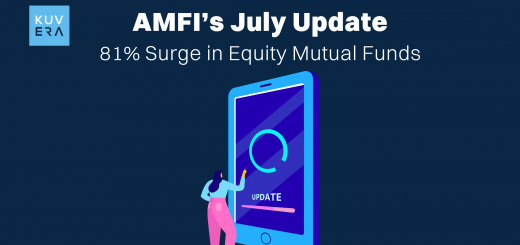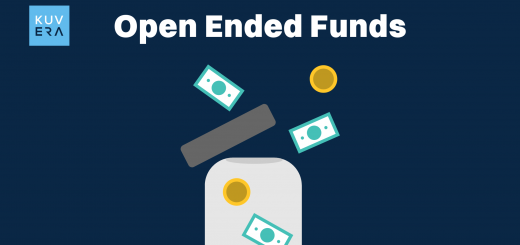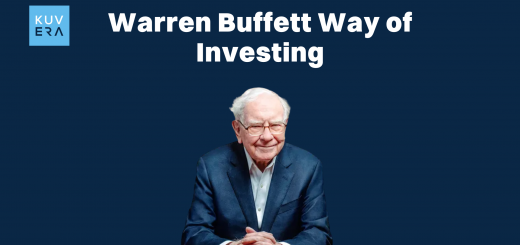Before we discuss passive funds, let’s discuss potatoes. Confused? Yes, passive funds and potatoes are quite similar! Here’s an analogy. Do you know what’s common between Samosa, Aloo Paratha, Masala Dosa, Vada Pav, French Fries and Aloo Tikki? They aren’t just tasty Indian street food that can get you salivating just by visualising these dishes. The one thing that connects all these dishes is the humble ‘Potato’. But this is not a cooking blog. It’s about passive funds and here’s what is similar between the two.
Passive funds aka. potatoes of investments can fit into any portfolio and absorb the flavour of your risk appetite.
Let’s understand passive investment features in detail.
What are Passive Funds?
Passive funds are mutual funds that aim to mimic the performance of a specific index, like the Nifty 50 or the Sensex. These funds are different from active funds.
- On one hand, there are active funds; which rely on fund managers to pick stocks and try to outperform the market. Imagine them as chefs trying to create a culinary masterpiece.
- On the other hand, passive funds are more like a reliable recipe that might never fail. They follow an index, giving you broad market exposure with a lower expense ratio.
So, while active funds are busy trying to beat the market, passive funds often simply track the index and do not actively invest — but still often end up winning the race!
Want to know more about active vs passive funds? Click here.
Why are Passive Funds becoming popular?
‘On average, the average large-stock fund manager produces average returns before fees and below-average returns after fees. So compared with after-fee returns, an index fund is superior.’ – Howard Marks, Oaktree Capital Management
Not just Howard Marks, even the legendary Warren Buffet is a fan of index funds. He has frequently advised that investing in passive funds or index funds is one of the best things investors can do to build a long-term, diversified portfolio.
In recent years, passive funds have become increasingly popular among investors, offering a straightforward and cost-effective way to diversify portfolios.
What are the Advantages of Passive Funds?
1. Lower Costs: Passive funds typically have lower expense ratios in comparison to active funds, as they do not require active management.
For a direct active large-cap fund, the Total Expense Ratio (TER) is around 80* bps (0.8%) on average. The TER can be in the range of 60 bps to 110 bps for the bigger large-cap funds.
* This has been calculated as the Weighted average expense ratio across 31 funds in the large-cap category.
2. Lower Exit Load: Active funds have higher exit loads with longer investment periods to encourage long-term investing, manage fund stability, and recover higher management costs. These funds can have exit loads of up to 1% even in large-cap schemes. In many funds, one needs to be invested for more than one year to avoid paying this exit load.
Passive funds, being lower-cost and more liquid with a simpler strategy, have lower exit loads to reflect their lower management expenses and ease of investor exit. Exit load is usually around 0.2% and the investment period required is often below one month.
3. Performance: As per historical data, many active funds have failed to consistently outperform their benchmarks, making passive investment a reliable option for long-term growth.
As markets in India develop, we are witnessing the Efficient Market Hypothesis (EMH) in action. EMH says that all the information about stocks is already baked into their prices.
This makes it tough for active fund managers to consistently beat the market. EMH backs the idea of passive investing because it suggests that it will be increasingly difficult for investors to outperform the index over a sustained period.

As you can see in the chart above, over a 3-year period and 5-year period, more than 80% of equity large-cap funds could not beat its benchmark market index. In the case of mid- and small-cap funds, over 50% of the funds underperformed compared to their benchmark market performance.
4. Diversification: By tracking an index, passive funds provide instant diversification across a broad market spectrum.
5. Transparency: Since passive ELSS funds directly mimic the market index, there is more transparency about the investment strategy and composition.
Which Passive Funds Are Suitable for You?
But wait, like potato dishes, there are a plethora of options available. So, how do you choose the right passive fund for you? Well, choosing the right passive fund depends on your financial goals and risk tolerance:
So, whether to invest in a large-cap, mid-cap or small-cap passive fund should be based on an individual’s risk appetite and investment horizon.
Here are the following types of Passive Funds that are available for investments:
| Type of Index Fund | Description | Suitable For |
|---|---|---|
| Market Cap Based Index Funds | Track indices like Nifty 50, Nifty Next 50, Sensex, Nifty Midcap 150, Nifty 500, etc. | Investors aiming to create long-term wealth for objectives like retirement or buying a house. |
| Sectoral/Thematic Index Funds | Track sectoral/thematic indices like Nifty IT Index, Defence Index, Nifty Auto, Nifty Bank, Nifty Pharma, etc. | Investors bullish about a particular sector. |
| Smart Beta Index Funds | Follow customised indices based on specific factors like value, momentum, size, or volatility. Popular indices include Nifty50 Equal Weight, Nifty50 Value 20, Nifty200 Momentum 30, Nifty100 Low Volatility 30, etc. | Informed investors aiming to generate returns superior to traditional benchmark indices. |
| International Index Funds | Track international indices to diversify portfolios geographically. Examples include Nasdaq 100 Index Fund and S&P 500 Index Fund. | Investors wanting to diversify their portfolio geographically. |
| Debt Index Funds | Track specific bond indices, such as government or corporate bond indices. These funds replicate the performance of the underlying index by investing in a diversified portfolio of fixed-income securities. They are usually Target Maturity Funds maturing in a particular year. Examples include Nifty AAA CPSE Bond Plus SDL Apr 2027 60:40, Nifty G-Sec Dec 2026, etc. | Investors seeking predictable returns from their debt investments with lower costs and reduced risk. |
Wrapping Up
Just as potatoes can enhance any dish, passive funds can seamlessly fit into various investment strategies, catering to different financial objectives and risk appetites.
With their low costs, transparency, and consistent performance, passive funds offer a versatile and dependable option for building a robust investment portfolio.
Whether you’re planning for retirement, saving for your child’s education, or seeking to grow your wealth, you can consider adding a dash of passive funds to your investment mix.
Explore the best options for your financial goals now!
Check out various index funds here.
Interested in how we think about the markets?
Read more: Zen And The Art Of Investing
Watch here: Investing in Focused Mutual Funds
Start investing through a platform that brings goal planning and investing to your fingertips. Visit kuvera.in to discover Direct Plans of Mutual Funds and Fixed Deposits and start investing today.
AREVUK Advisory Services Pvt Ltd | SEBI Registration No. INA200005166
DISCLAIMER: Mutual Fund investments are subject to market risks. Read all scheme related documents carefully. Registration granted by SEBI, membership of BASL (in case of IAs) and certification from NISM in no way guarantee performance of the intermediary or provide any assurance of returns to investors. Investments in securities market are subject to market risks. Read all the related documents carefully before investing. The securities quoted are for illustration only and are not recommendatory.












